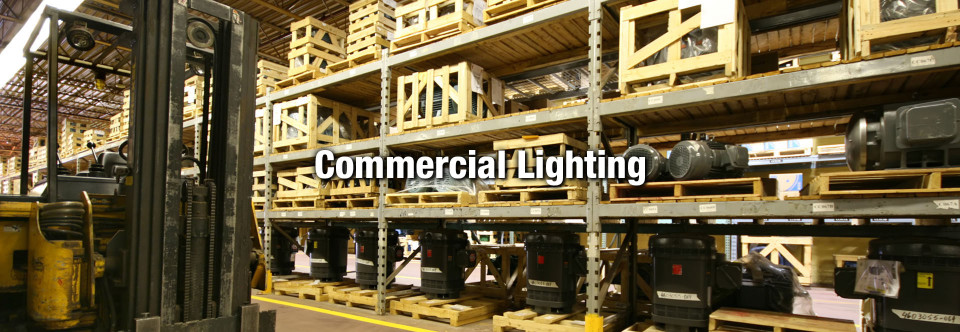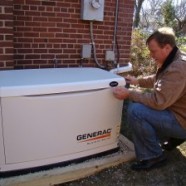"With 27 years in business serving the community of South Florida, Static Electric is your one-stop shop for all business and residential electrical contractor needs."
From new homes through remodeling and renovations, we’ll give you peace of mind that your installation is safe and fully compliant with building codes. In commerce and industry, we’ll ensure the safe and efficient functioning of your business’s electrical operations, help you save money and avoid costly downtimes.
6 Top Tips for Standby Generator Maintenance
Power outages can range from 2-minute inconveniences to blackouts that last multiple days. The shorter ones can be slightly annoying, but longer blackouts can affect your business or your quality of life. The best way to avoid shutting your business down or suffering through bad weather due to a blackout is to install a standby generator to supplement your basic electrical system. Like any other piece of electrical machinery, generators need to be maintained on a regular basis to keep them in good working order. If you want your standby generator to be reliable in a blackout, you have to be reliable in the care you give it the rest of the year.
Tip #1: Read the Owner’s Manual
Every generator has a slightly different set of procedures for its regular maintenance schedule. Before trying any form of mechanical work on your standby generator, read the manual to find the model-specific advise it offers.
Tip #2: Conduct a Visual Inspection
Whether you have a built-in generator or a portable model, you should visually inspect it on a regular basis. Look for leaves and other plant debris that may have blown into the body that may clog operations. Try spotting puddles of oil and coolant to make sure leaks haven’t developed. Make sure the exhaust port is open and free of clogs.
Tip #3: Change the Oil Regularly
You probably wouldn’t drive your car for a year without changing the oil. The same thing applies to the motor in your standby generator. The oil inside has to be changed on a regular basis, especially after being used for any length of time. After a lengthy period of use, allow the generator to cool down for at least 48 hours. Check the oil to see if it needs changing.
If the oil needs changing, empty out the old oil and replace it with 2 quarts of new. You can use natural oil or synthetic, but synthetic oil works better in extreme cold and higher heat, so it may be a better choice. While you’re changing the oil, change out the old, dirty oil filter and replace it with a fresh one.
Tip #4: Pull the Spark Plugs
Spark plugs can get dirty and corroded in a generator, even with light use. Pull the plugs in yours after one year and compare them to a set of new ones. You’ll probably find that the old set is covered in brown and black corrosion. Replace all the spark plugs with a new set, then mark your calendar to remind yourself to do the same thing next year.
Tip #5: Replace the Air Filter
You know how dirty the air filter gets in a car or your home furnace. Accumulated dust and dirt will eventually clog the air passages, preventing fresh air to move through. Depending on the air quality in your environment, you may have to replace the air filter in your standby generator twice a year or every two years. It’s a simple procedure – just open the cover, slip out the old filter and slide in a new one.
Tip #6: Run the Engine
Start and run your standby generator every month. Let it run until the temperature stays the same for at least 10 minutes. This will allow the oil to circulate throughout the engine, lubricating the parts, and will ensure that no leaks or cracks in the exhaust are beginning to form.
At the absolute minimum, standby generator maintenance is something you should do at least once every two years, or after 200 hours of constant use. Never using the generator is not an excuse for leaving it alone for years at a time. Doing that will almost guarantee that it will fail you when you need it most.
Read MoreHow to Achieve HVAC Energy Savings for Your Home
The percentage of energy you use changes depending on whether you live in southeast Florida or the northern tip of Maine, but about half of the total energy you use in your home goes directly to air conditioning and heating costs. Heating, ventilation and air conditioning, or HVAC, is also one of the most obvious ways in which to save money on home energy bills. Its usage is such a large chunk of your total energy costs, even changes that result in small percentages of savings can make a big difference. It’s the simple things that count, and taking care of small tasks that most people overlook is a great way to find HVAC energy savings all year long.
A New Thermostat
Older thermostats are often inaccurate due to extended use, plus they’re static machines. Set a thermostat at 68 degrees, and that’s where it will stay. Newer programmable thermostats have the ability to be more flexible. You program in the temperature you want during the day when you’re home, then set the temperature back another few degrees for when you’re sleeping or at work. You’ll save money by not heating or cooling the building while you’re not there, or when you’re under your covers or in front of a fan, then the thermostat’s timer will turn the temperature back to normal just in time for your home to be comfortable when you arrive. It’s a simple job for a commercial electrician to install a programmable thermostat, and the savings can pay for it in just a few months.
The Air Filter
Pull out your air filter every month and check to see if it’s dirty. If it’s soiled, throw it away and replace it with a new, clean version. Replace the filter at least every three months, but you may need a monthly replacement during heavy usage times in the heat of summer or the middle of winter. A clogged filter doesn’t allow air to pass through as easily, making the machine work harder and using more energy in the process. Replacing the air filter on a regular basis will extend the life of your HVAC system, putting off any repair or replacement costs to farther in the future.
Heating and Cooling Ducts
You can have a very well-insulated home, but if the ducts to your heating and cooling system aren’t sealed properly you’re going to lose energy from multiple points in your home. Concentrate first on the ducts that run through the harshest weather spots in your home: the attic, the crawlspace, the basement, or through an unheated garage. Use metal-backed or foil tape, or duct sealant, to seal all the seams and connections to these ducts. After they’ve been sealed, wrap them in ductwork insulation to keep them from getting hot in the summer and cold in the winter. After these ducts have all been sealed properly, find and seal any ducts in the main portion of the house.
ENERGY STAR Equipment
If your appliances are more than 10 years old, it may be time to replace them for a better running and more energy-efficient model. Do your research and compare energy usage between different models. Often the less expensive model of a refrigerator or backup generator is more expensive in the long run than those with ENERGY STAR certification. The same holds true for a new HVAC system for your home. Installing a more efficient heating and cooling system can give you significant HVAC energy savings throughout the year.
Upgrade Lighting Systems
Older fluorescent lights, as well as incandescent bulbs, put out a lot of heat while they’re being used during the day. This can result in the ambient temperature in your home or business to go up, causing the air conditioner to have to work harder. Newer LED lights are more efficient because they use less power to create the same amount of light, and they also give off a small fraction of the heat that older lighting styles do. Replace all your old bulbs with newer energy-efficient LED lights to decrease the temperature inside.
Read More4 Reasons to Hire an Independent Electrical Contractor
New construction and renovation both require contractors with numerous building skills, such as:
- drywall
- plumbing
- painting, and
- electricity
General contracting companies are designed to offer all the services you need in order to create and complete your building plans, without the bother of dealing with multiple companies and multiple billing methods. With all that competence and lack of complications, why would anyone choose to hire an independent electrical contractor?
There’s more to a successful building project than simplicity, and a dedicated electrical contractor can bring more to the table than most general contractors can think of doing. Here are some of the top reasons for hiring one:
Reason #1: Cost
It may seem as if hiring a separate contractor to do your electrical work is an expensive way to contract out your project, but in most cases you’ll end up with the same cost, or even saving money. For all but the most basic of jobs, a general contractor will have to sub-contract out the electrical work on a renovation or new construction job. Once they do that, the general contractor will pay the electrical contractor, then pass the cost on to you, generally adding on a fee for doing the paperwork of sub-contracting. Hiring the electrical contractor yourself bypasses any extra fees your general contractor might charge.
Reason #2: Expertise
Just as specialists are more knowledgeable about their specialties than general physicians, independent electrical contractors are better informed about all forms of electrical work than general contractors would be.
Those that specialize in electrical work have the education and experience to safely complete the most complicated residential or commercial electrical project. If you’ve got a tricky job of wiring to do, or need advice on writing up plans for a renovation, a professional electrical contractor is the right choice.
Reason #3: Knowledge and Education
General contractors have to show some knowledge and experience in multiple disciplines, but licensed electrical contractors have to take involved classes as well as experience hands-on training before attempting to take the test for their license. Continuing education classes are a normal part of their career, which keeps electricians up-to-date with the latest in technology, work methods, building codes, and materials.
General contractors simply don’t have the time to keep current on all the specialties they deal with, and they rely on specialists to let them know when big changes occur in the industry. When it comes to new safety procedures, money-saving technology, and efficient building methods, it’s more likely you want to hire the contractor who is constantly learning about his profession instead of the one who learns about it second hand.
Reason #4: Innovation and Creativity
When it comes to renovating a building or building a new home or business, you want the best you can find, and not just the basics. General contractors are good at following plans set out, but rarely have the knowledge or education to suggest creative or innovative alternatives to the basic plans you have in mind.
An independent electrical contractor knows enough about the business to help you change your plans, and to explain why you need to do so. He’ll let you know about the local lightning rates and show you why you need a subtle set of air terminals, or lightning rods, attached to the roof of your building. He can suggest alternate green technology that you may never have heard about before. He also knows the building codes that apply to any project you may begin, and he can tell you whether your plans fit in with the codes, or how to change them if they don’t. In short, he’ll be more of a partner in your electrical project, and not just a tradesman doing the work after the fact.
Read MoreRequirements for Electrical Companies in South Florida to Succeed
They may not have to deal with the effects of lake-effect snowstorms, but electrical companies in South Florida have weather issues of their own they have to work through. Like professionals in any area, South Florida electricians must be experts at dealing with the unique problems their environment poses, while maintaining the highest professional standards. Much of South Florida is under renovation and gentrification, and local electricians must be expert at upgrading older wiring and fixtures while still retaining the flavor of older historic buildings and neighborhoods. These professionals must have the training and experience of electricians in any other part of the country, but should also have specialized knowledge of the problems unique to the South Florida area.
Alternate Power Supplies
Between lightning storms, hurricanes, tropical storms, and an aging infrastructure, South Florida is subject to power outages on an increasing basis. Homeowners can be inconvenienced by this, but businesses bear the brunt of a power outage simply by being shut down until the power comes back on. Electrical companies in South Florida have to be experts in backup generators, installing alternate power supplies for homes and businesses. They know the amount of power needed for a bare minimum in a household simply to keep the freezer and lights going, all the way up to a permanent installation that can power a health clinic or emergency community cooling station.
Lightning Protection
Florida has more lightning strikes per square mile than any other state in the country, and the South Florida area gets its fair share of strikes. A lightning bolt hitting a building can cause physical injury, damage to electrical systems and even fire if it’s not dealt with correctly. Air terminals, which used to be called lightning rods, can redirect the power from a lightning bolt to a buried grounding spot away from a building. South Florida electrical companies know how to calculate the correct number of air terminals according to a building’s square footage and height. They are also experts at installing surge suppression for delicate machinery and equipment inside homes and businesses, to prevent expensive data loss and systems failures in the case of an electrical storm in the neighborhood.
Renovation
While the basics of electrical renovation may be similar throughout the country, electrical companies in South Florida have some special considerations to keep in mind when doing their job. The area’s stucco walls, curved shapes, Art Deco flavor, and pastel tones are unique to this part of the country, and it’s a flavor that clients want to preserve when redoing the bones of a building. Local electricians know how to update older wiring that may be corroded by constant contact with salt air, while preserving the look and feel of a Jazz age neighborhood.
New Construction
Electrical companies in this area are more aware of the effects of weather on their construction than in many other parts of the country. They know about the problem of lightning strikes, so they must design air terminals into their wiring plans. Power outages are a fact of life in South Florida, so a backup power supply is a common addition to their plans. The year-round warmth inspires many residents to install elaborate landscaping, so outdoor lighting of all types is a large part of many wiring plans, and ceiling fans are the norm in almost every room in a house. Commercial electricians know to insulate wiring extremely well to help eliminate the problems with salt water corrosion, and they acknowledge that this is a growing area of the state, so they build a job with the next ten years in mind.
Read More5 Residential Wiring Aspects of Home Improvement Projects
Growing families and aging houses combine to create a need for home improvement projects big and small. You may be adding a second story over your attached garage while your neighbor puts on a new roof, but each job has one thing in common: a need for professional electrical work. A lot depends on the size of your project and the age of your house, but a professional electrical contractor will work with you to determine what factors you need to consider before starting on your home improvement project.
#1: New Wiring
If you’re adding a room onto your home, you’ll need to look at your wiring needs before you finalize your plans. You should work with a licensed electrician from the very beginning to determine the amount of power you’ll need running through the room, the number of outlets that are necessary, and any lighting fixtures you might want to install. This should all be part of the original planning stage before any actual work begins.
#2: Upgraded Wiring
Your basic house structure is solid, but you don’t like the old-fashioned moldings and you’re using the room much more than you used to. You may not need an entirely new set of electrical wiring, but an upgrade may be in order. Adding more outlets to a room due to increased entertainment use may put a strain on your system. Older fuse boxes should be replaced by modern circuit breakers, and old wiring should be inspected to make sure it’s still in good condition.
#3: Outlets and Switches
Upgrading a bedroom or dining room may call for installing a dimmer switch to help with the mood as well as controlling electrical costs. High efficiency fixtures combined with dimmer switches can enhance any room while saving money.
Any room which can contain moisture should be equipped with GFCI outlets, including:
- Bathrooms
- Garage
- Workshop
- Backyard
- Kitchen
- Wet bar area of basement
- Hot tub
- Pool area
#4: Lightning Safety
Every home improvement project that includes a new roof should have lightning protection installed in the form of air terminals, also known as lightning rods. These short, unobtrusive poles allow lightning that strikes your home to be harmlessly diverted into a grounding pad away from your house, prevent electrical and fire damage. In addition, a contractor will advise additional protection in the form of surge suppression, to ensure the safe operation of your delicate electronics during sudden power outages due to lightning.
#5: Energy Savings
Instead of replacing old materials with newer versions of the same type, consider changing them completely to more efficient and less expensive energy-saver varieties. All light bulbs can be improved upon by changing them out for LED lighting systems. They run cooler, use less power, and give off a brighter light than older incandescent bulbs. For fluorescent lights in basements, kitchens, and hobby rooms, replacing the ballast in each light for new, high efficiency models can save power and add to a greener lifestyle. Even a simple study of the way your family uses the rooms can reveal wasted electrical power and ways to rearrange your living space to make the most of what you’ve already got going in each area.
When you’re considering a home improvement project, don’t neglect the residential wiring aspects – it will just cost you more in the long term if you do.
Read MoreElectrical Considerations for Renovating a Home
It’s always a smart idea to check and update the wiring in a home when taking on a renovation project. The wiring itself is often less work than actually accessing the works inside walls and flooring, so the best time to work on them is when the bones of the house are already showing. Age is always a factor when it comes to electrical work; if your home is more than 30 years old, it probably has outdated wiring and inadequate power outlets. Keep your family and the next 20 years in mind when deciding on how much electrical work to do while you’re renovating a home.
Planning for the Future
Technology tends to creep, and the total quantity of electronic gadgets in a home generally increases every year. This means a bigger need for electrical outlets in every room in the house. Look at what your family uses right now and double the number of outlets you think you need. Renovating a room or house is a major project, and something you won’t want to do any more often than necessary.
Pay attention to daily tasks your family does now, and those likely to be common in the next ten years or so. These might include:
- Recreational reading
- Crafts and hobbies
- Using a computer
- Gourmet cooking
Each of these activities will have special electrical needs, from extra outlets in a kitchen for the gourmet cook to special corner task lighting for a reading nook. Adding extra outlets is rarely a bad thing, especially in the busiest parts of your house.
Updating for Flexibility and Safety
Convenience is one reason to update your electrical wiring, but safety and flexibility of use can be even more important. Older wiring can fray and become a fire hazard, and homes with fuse boxes or inadequate circuit breakers can be safety hazards, as well. It makes sense to check out all the wiring and electrical installations in a room or portion of the home when taking it apart for renovation. Even if you only decide to upgrade a portion of the room, you’ll have peace of mind knowing the wiring left behind is safe for your family.
One way to save money on a new wiring system when you’re renovating a home is to use the old conduits, if the wiring plan hasn’t changed too much. These major installations have already been shown to be safe and logical ways to deliver power and protect wiring. If you find you can use much of the same older wiring plan, then using the old conduit will save you a significant amount of money on the upgrade.
Use a Professional Electrical Contractor
General contractors and handymen are useful for many types of home improvement project, but when it comes to the wiring planning and execution in your home, you need to use a licensed professional electrician. An experienced professional will sit down with you from the first day to coordinate an electrical plan with your renovation and remodeling ideas. He knows building codes and safety issues having to do with electrical work, and can offer improved and alternate ideas for your upgrade plan. A local professional will also know the local building codes, and can pull permits for doing work on your project. He can work with you on the original blueprint and offer suggestions on how to improve on your electrical system for both safety and economy.
Contact us to discuss your electrical needs when you’re renovating a house.
Read MoreElectrical Wiring: Working With an Experienced Professional
Whether you’re renovating a small business or building an entire subdivision, you may be tempted to hire a general contractor to take care of your electrical needs. A contractor may claim to be less expensive than a licensed electrician, but his lack of knowledge and experience with the small details of electrical work can end up costing you in the long run. An experienced licensed electrician can do the correct electrical wiring job for your building project, economically and safely.
Planning
Restaurant retrofits have different wiring requirements than community centers, but only an experienced professional can know all the details needed for each job. An experienced professional electrician will sit down with you in the early planning stages of a project, blending the electrical wiring plans with all other aspects of construction. He knows about specialized wiring plans, depending on the type of business you will be building. Whether you need extra outlets for kitchen equipment or an area with specialized task lighting for an office, you’ll get a job that fits your need better by using someone with experience.
Cost Savings
The cheapest way to go is not always the most cost-effective method when hiring contractors for your commercial building or renovation project. An experienced licensed electrician can save you money in a number of ways when hired instead of a general contractor. While contractors will have some electrical experience as a result of doing a variety of work, a licensed electrician knows all the small details that make up a efficient and complete electrical wiring job.
- Experienced electricians make fewer mistakes, requiring less reworking on a project
- Years of experience means knowledge of multiple methods of doing a job, including the most cost-effective one for you
- Licensed contractors often have relationships with suppliers, and can get raw materials for the job cheaper
- Contractors with experience know the best way to install an electrical wiring job, cutting down on time and money
Ideas
A general contractor may be perfectly competent to follow your directions and install exactly what you are asking for, but an experienced licensed electrician will know enough about the subject that he can offer suggestions that improve on what you’ve already done. Instead of simply being an employee, an experienced electrician can be a partner in your project, showing you improved ways to install electrical wiring and offering suggestions about outlets, lighting, safety, and security. Specialization creates expertise, and experience gives a professional the experiences to find multiple options for your project.
Legality
Each community has its own building codes, for electricity and electrical wiring as well as for structure. Hiring a licensed professional electrician will ensure you work with someone who knows building codes and has worked within them for years. You’ll avoid work stoppages that come from having to redo sections to bring them up to code, and you’ll sail through city inspections once your project is nearing completion.
Read More












Recent Comments